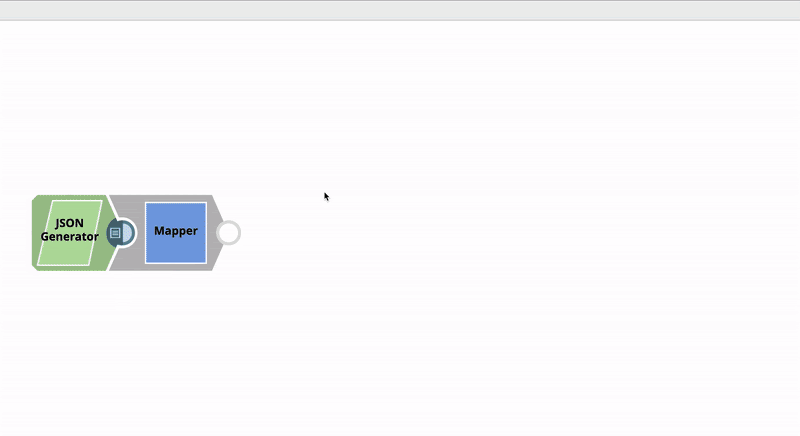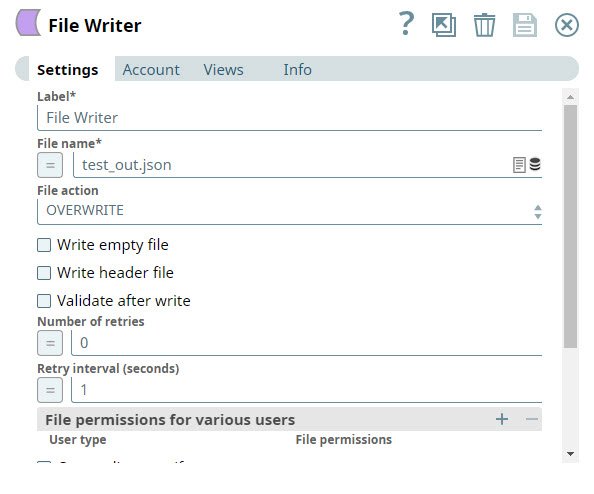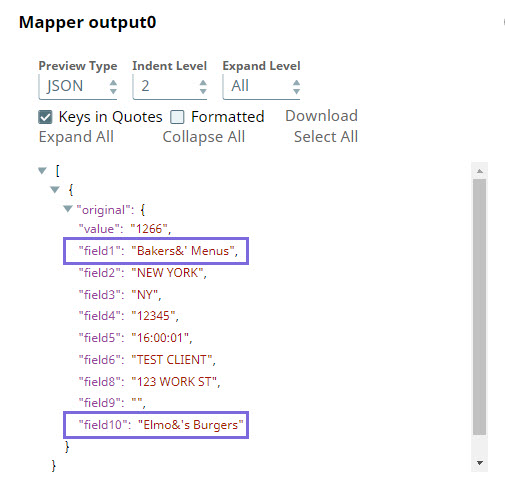In this article
| Table of Contents | ||||||||
|---|---|---|---|---|---|---|---|---|
|
...
Move - A move is equivalent to doing a mapping without a pass-through. The source value is read from the input data and placed into the output data. Since pass-through is turned off As the Pass through is disabled, the input data is not copied to the output. Also, the source value is treated as an expression in the Mapper, but it is a JSONPath in the Structure Snap. A jsonPath() function was added to the expression language that can be used to execute a JSONPath on a given value. If pass- Pass through is enabled, then you will probably have to should delete the old value.
Delete - Write a JSONPath in the source column and leave the target column blank.
Update - All of the cases for update can be handled by writing the appropriate JSONPath. For example:
Update value:
target path = $last_nameUpdate map:
target = $address.first_nameUpdate list:
target = $names[(value.length)]The '(value.length)' evaluates to the current length of the array, so the new value will be placed there at the end.
Update list of maps:
target = $customers[*].first_nameThis translates into "write the value into the 'first_name' field in all elements of the 'customers' array".
Update list of lists:
target = $lists_of_lists[*][(value.length)]
For performance reasons, the Mapper does not make a copy of any arrays or objects written to the Target Path. If you write the same array or object to more than one target path and plan to modify the object, make the copy yourself. For example, given the array "$myarray" and the following mappings:
|
Any future changes made to either
|
The same is true for objects, except you can make a copy using the ".extend()" method as shown below:
|
Passing Binary Data
You
can convert binary data to document data by
adding the Binary-to-Document Snap upstream of the Mapper Snap.
Similarly, to convert the document output of the Mapper Snap to binary data,
add the Document-to-Binary Snap
downstream of the Mapper Snap.
You can also transform binary data to document data within the Mapper Snap itself
by using the
$contentexpression.
...
Binary Input and Output
If you are only working with a binary stream as both input and output, you must set both source and target fields with
$content, then manipulate the binary data using the Expression Builder. If you do not specify this mapping, then the binary stream from the binary input document is passed through
...
without any change.
Snap Type
Mapper Snap is a TRANSFORM-type Snap that transforms data and writes or passes it to the downstream Snap.
...
Expressions used in this Snap, downstream of any Snowflake SnapSnaps, that evaluate to very large values such as EXP(900) are displayed as Infinity in the input/output previews. However, you can see the exact evaluated values in the validation previews; hence, ignore this error.
...
Field Name | Field Type | Description | |||||
|---|---|---|---|---|---|---|---|
Label* Default Value: Mapper | String | The name for the Snap. You can modify this to be more specific, especially if you have more than one of the same Snap in your Pipeline. | |||||
Null-safe access Default Value: Deselected | Checkbox | Select this checkbox to set the target value to null in case the source path does not exist. For example, | |||||
Pass through Default Value:Deselected | Checkbox | This setting determines if data should be passed through or not. If you select this checkbox, then all the original input data is passed into the output document together with the data transformation results. If you deselect this checkbox, then only the data transformation results that are defined in the mapping section appear in the output document and the input data is discarded.
When to always select Pass through Always select Pass through if you plan to leave the Target path field blank; else, the Snap displays an error that the field that you want to delete does not exist. This is the expected behavior. For example, you have an input file that contains a number of attributes; but you need only two of these downstream. So, you connect a Mapper to the downstream Snap supplying the input file, select the two attributes you need by listing them in the Expression fields, leave the Target path field blank, and select Pass through. When you execute the Pipeline, this Snap evaluates the input documents/binary data and picks up the two attributes that you want, and passes the entire document/binary data through to the Target schema. From the list of available attributes in the Target Schema, the Mapper Snap picks up the two attributes you listed in the Expression fields, and passes them as output. However, if you had not selected the Pass through checkbox, the Target Schema would be empty, and the Mapper would display a | |||||
Transformations* | Use this fieldset field set to configure the settings for data transformations. | ||||||
Mapping Root Default Value: $ | String/Suggestion | Specify the sub-section of the input data to be mapped. Learn More: Understanding the Mapping Root. | |||||
Input Schema | Dropdown list | Select the input data (that comes from the upstream Snap) that you want to transform. | |||||
Mapping table | Use this field set to specify the source path, expression, and target path columns used to map schema structure. This field set contains the following fields: | ||||||
Expression | Target pathExpression Default Value: N/A | String/Expression | Specify the expression to write to the target path. Expressions that are evaluated will remove the source targets at the end of the run.
Lear More: Understanding Expressions in SnapLogic and Using Expressions for usage guidelines.
| ||||
Target path Default Value: N/A | String/Suggestion | Specify the target path at which the expression should be written. Target Path Recommendation
For example, you have the Expression $Emp.Emp_Personal.FirstName in one of your Pipelines. And you have set the Target path for this expression as $FirstName. Now, if you use the expression $Emp.Emp_Personal.FirstName in a new Pipeline, then Iris suggests $FirstName as one of the recommended Target paths. This helps you standardize the naming standards within your org. The following video illustrates how Iris recommends Target path in a Mapper Snap: | |||||
Snap Execution | Dropdown list | Select one of the three modes in which the Snap executes. Available options are:
| |||||
...
You now need to write the updated data back into the SLDB as a JSON file. Add a JSON Formatter Snap to the Pipeline to convert the documents coming in from the Mapper Snap into binary data. Then add a File Writer Snap and configure it to write the input streaming data to the SLDB.
...
You can now view the saved file in the destination project in SnapLogic Manager.
...
Data Output Example
...
If the Escape Character is | Use Expression | Sample Output | ||
|---|---|---|---|---|
Single quote (') | JSON: $original.mapValues((value,key)=> value.toString().replaceAll("'","''")) OR $original.mapValues((value,key)=> value.toString().replaceAll("'","\''")) CSV: $[' Business-Name'].replace ("'","''") | |||
Ampersand (&) | JSON: $original.mapValues((value,key)=> value.toString().replaceAll("'","\&'")) OR $original.mapValues((value,key)=> value.toString().replaceAll("'","&'")) CSV: $[' Business-Name'].replace ("'","&'") | |||
Backslash (\) | JSON: $original.mapValues((value,key)=> value.toString().replaceAll("'","\\'"))
CSV: $[' Business-Name'].replace ("'","\\'") |
In this way, you can customize the data to be passed on to downstream Snaps using the Expression field in the Mapper Snap.
...
| Widget Connector | ||||||||||
|---|---|---|---|---|---|---|---|---|---|---|
|
...
| Attachments | ||
|---|---|---|
|
...
Community Links:
| Insert excerpt | ||||||
|---|---|---|---|---|---|---|
|





